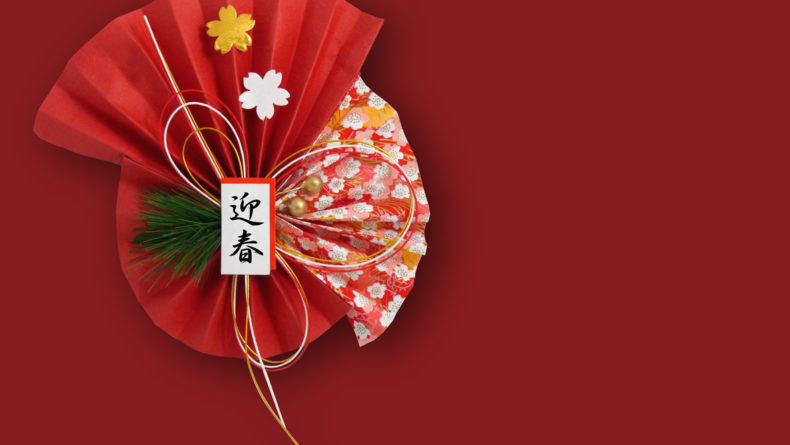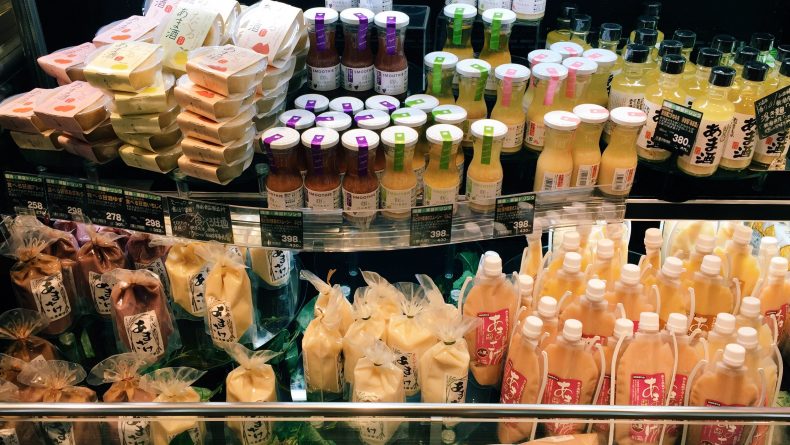Osechi Ryori: The Hidden Meanings Behind Japanese New Year Food
The Symbolism Of Prawns and Chestnuts
They’re pretty, they’re delicious and they’re symbolic.
With Christmas now behind us, you can see the whole of Japan getting ready for New Year’s. That involves taking out the kotatsu (table and blanket over an electric heater), securing the omochi (pounded rice cakes) and getting ready to cook osechi ryori—Japan’s traditional food served during the New Year’s holidays. While we see it everywhere, how much do we actually know about osechi?

Osechi ryori, said to have begun in the Heian era (from 794), is a set of small, traditional dishes served in beautiful three- or four-layered lacquer bento boxes called jubako, placed at the center of the table on New Year’s Day and remaining there over the next three days. Shared with all family and friends, each item in the tray represents a particular wish for the next year. Here are 12 typical food items you’ll encounter and their symbolic meanings.
Datemaki: Scholarship
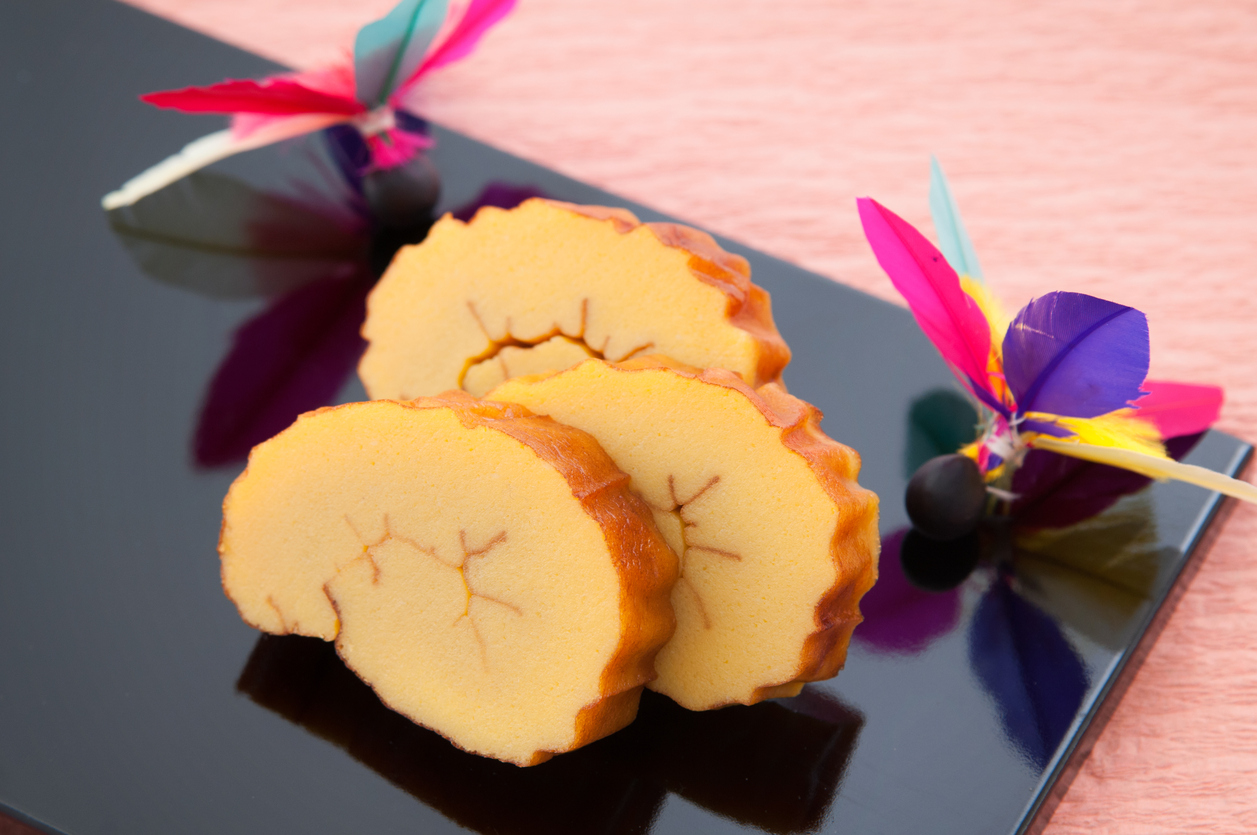
It looks exactly like tamagoyaki (Japanese rolled omelet) but once you taste it you’ll know the difference. Datemaki, the sweet rolled omelet, is mixed with an additional ingredient called hanpen (a fish cake) that makes it much fluffier than tamagoyaki. In the past, Japanese people traditionally rolled out important documents or paintings. Due to its resemblance to the scrolled papers, the dish is said to represent a wish for the development of culture and learning.
Kuri-kinton: Wealth
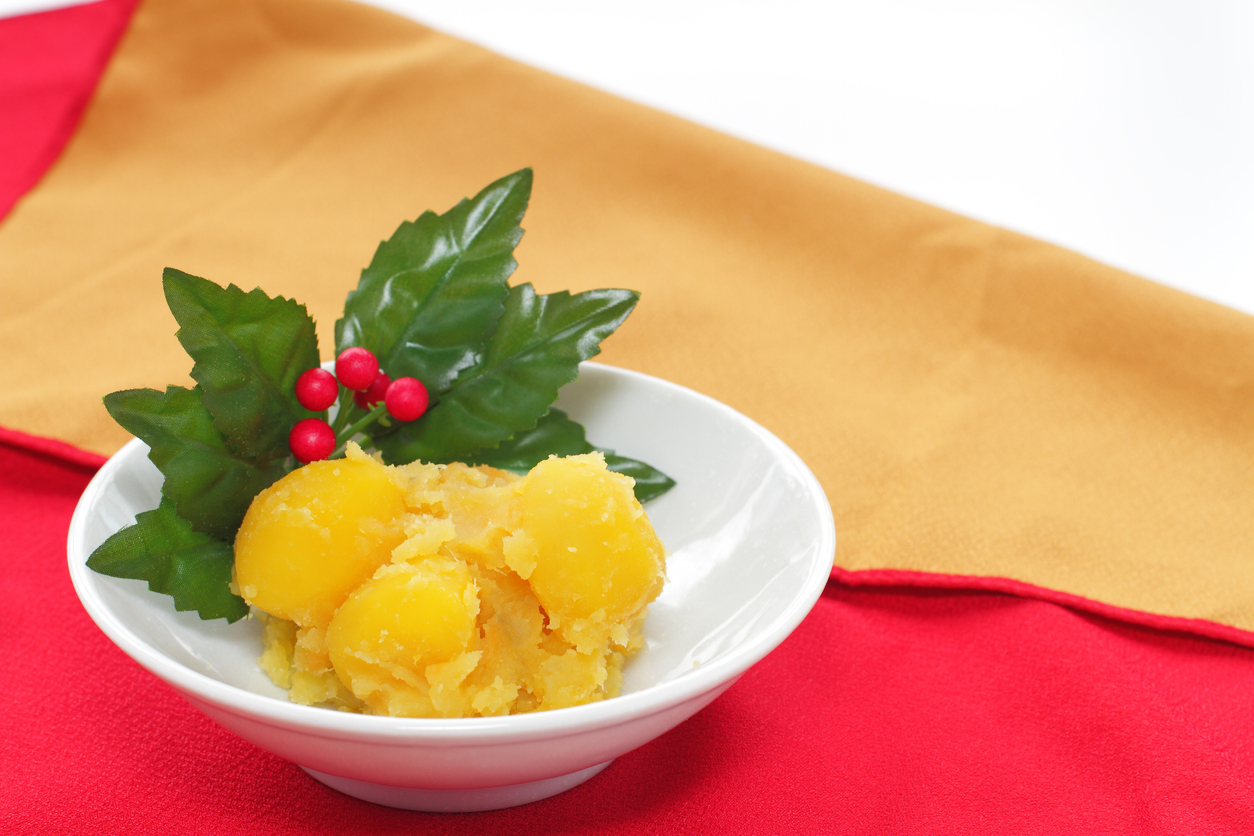
Kuri kinton (sweet chestnuts) literally means “golden dango (sweet dumpling) made of chestnuts.” As the color is yellowish-gold, it goes without saying that it represents a wish for wealth and a fruitful new year. You may find it difficult to eat them as they are quite sticky. However, if you have a sweet tooth—keep some of them on your plate before they’re all gone.
Kohaku Kamaboko: Sunrise
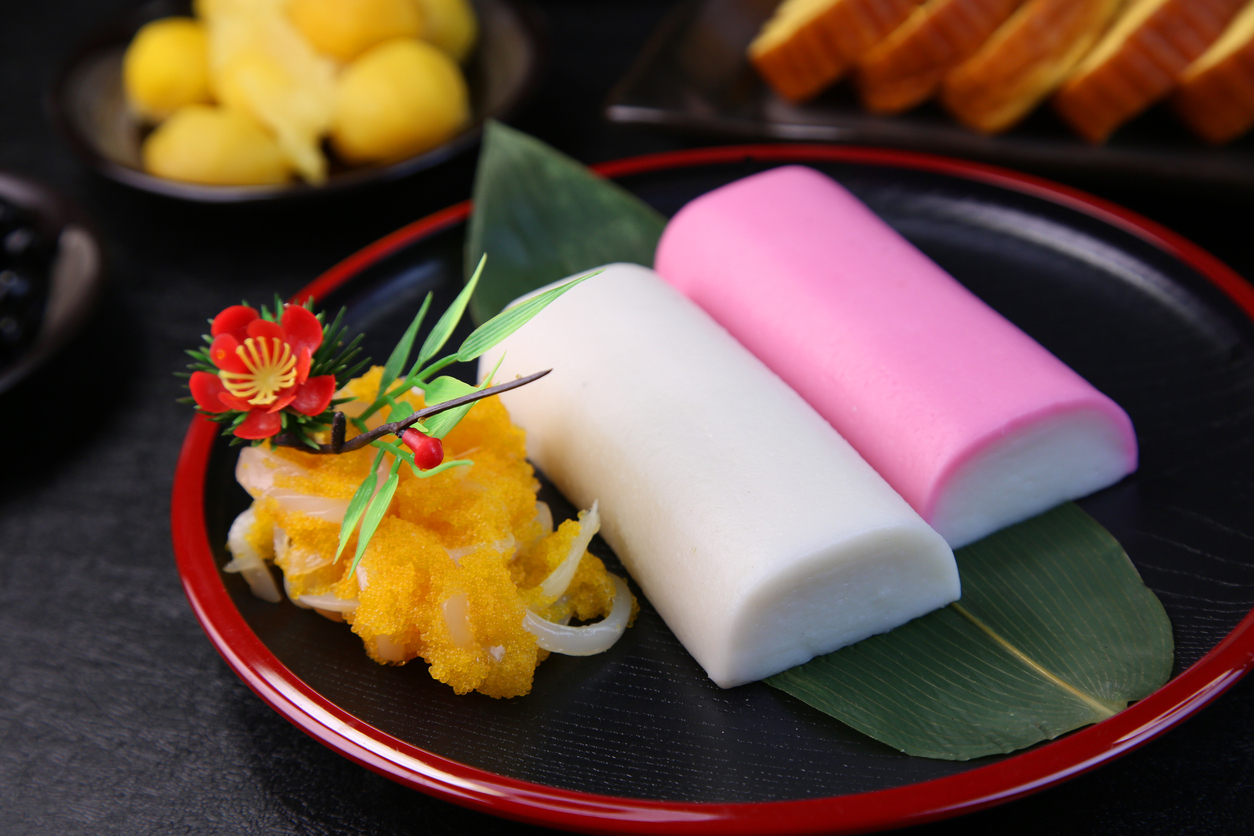
Kamaboko (boiled fish paste) is most commonly presented as a combination of the colors red and white. The red color is believed to prevent evil spirits, while the white represents purity. Further, the shape of the kamaboko—resembling that of the sun at daybreak—represents the first sunrise of the new year.
Kobu-maki: Happiness
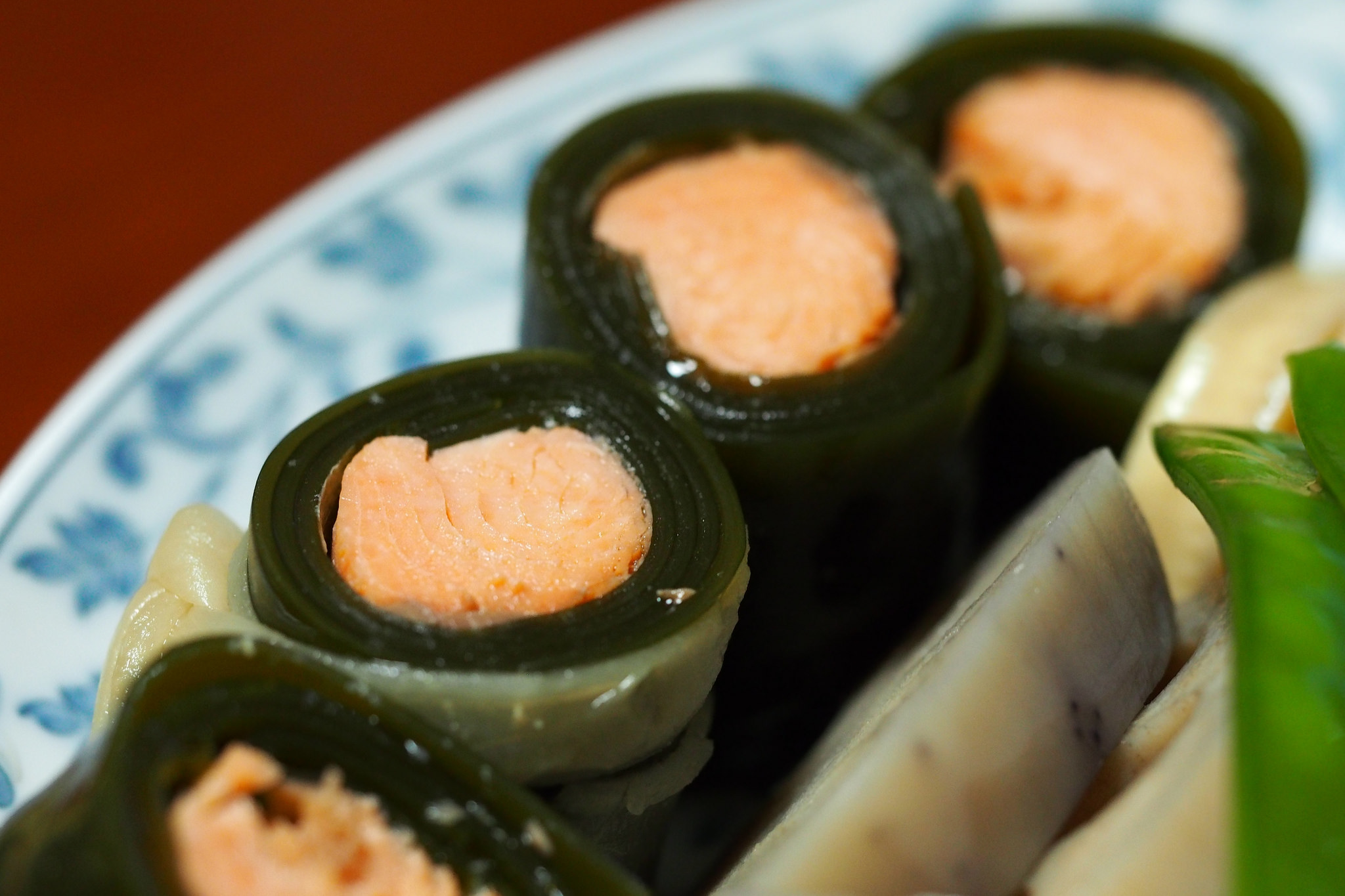
The kobu, or kelp, served around seems to have different meanings. The first of which is quite simple. The word “kobu” is a Japanese homonym for “yorokobu,” which means joy and happiness. Kobu also symbolizes many offspring when written as “子生,” a kanji that represents childbirth.
Kazunoko: Fertility

Kazunoko, or herring roe, also uses easy Japanese wordplay. “Kazu” means numbers and “ko” means children. So, kazunoko symbolizes being blessed with many children. Another reason this particular type of fish is used, interestingly, is that herring is called “nishin” in Japanese, but if written with different kanji, it becomes “二親” (“ni shin“), meaning two parents.
Ebi: Longevity
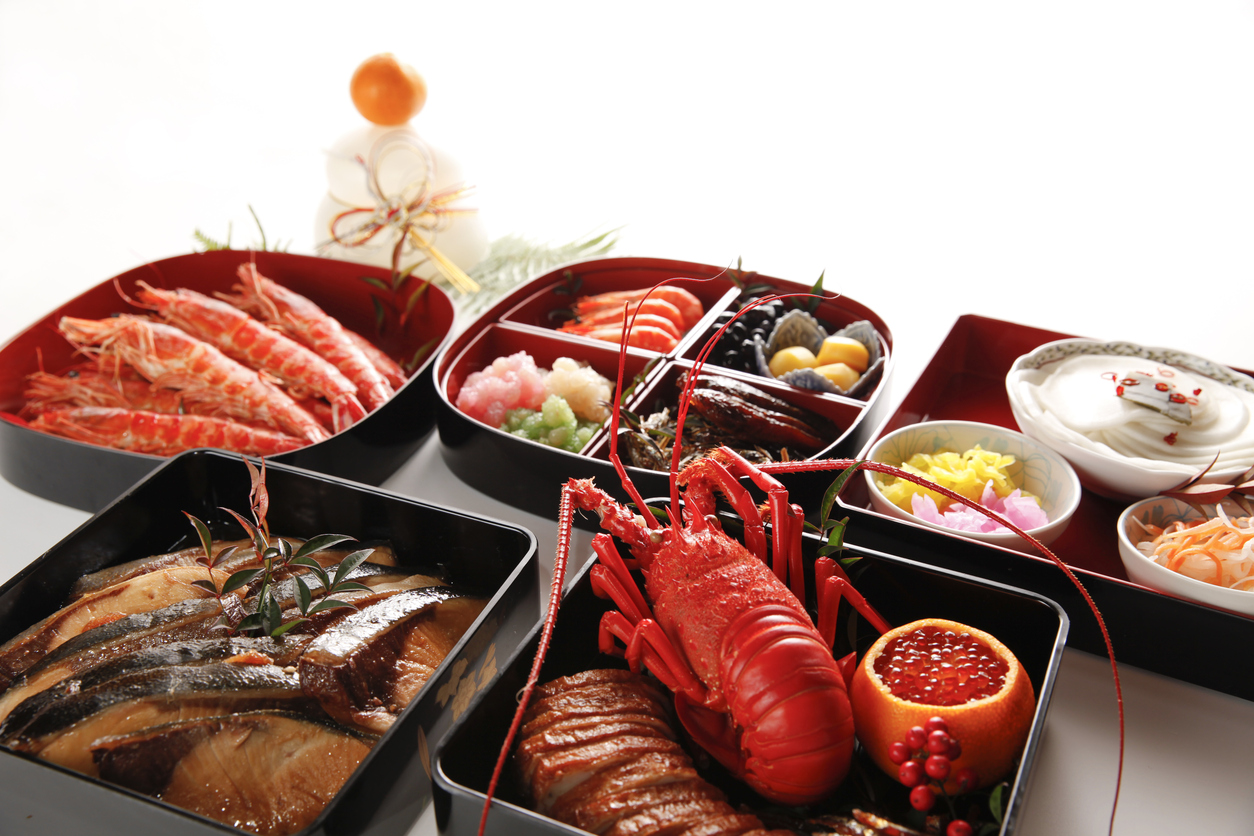
Picture a shrimp. It has a bent back and two antennae that look like a long beard, don’t they? Therefore, the ebi (shrimp) on your plate is there to wish you a long life, until you have a bent back and long beard (sorry ladies, that happens). The red color makes the osechi look even more appealing and colorful, but it’s also said that it’s there to scare evil spirits away. Just like its friend kamaboko.
Kuromame: Health
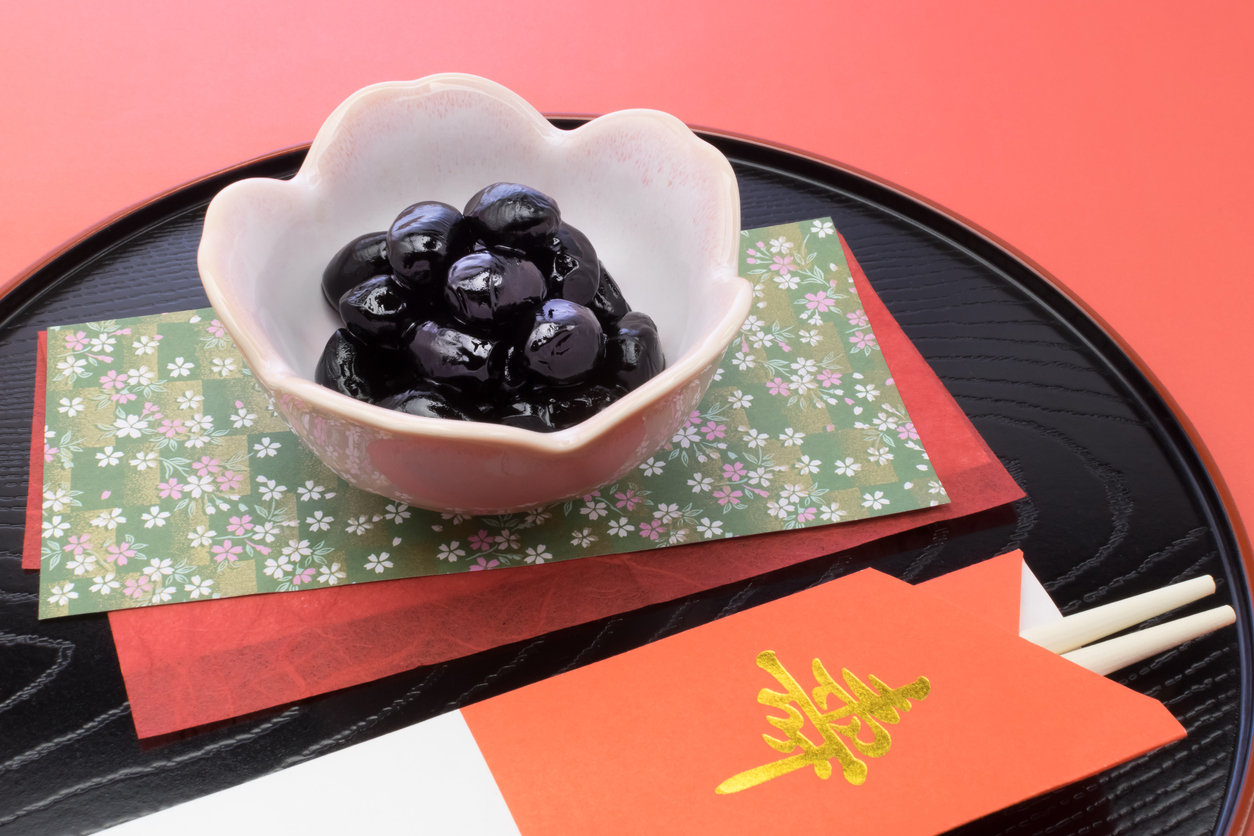
According to Taoism, the color black works as a protection against evil spirits. Moreover, as the word “mame” originally means good health and strength in Japanese, kuromame (black beans) represents a wish to live and work in sound health during the next year.
Tatsukuri (Gomame): Bounty
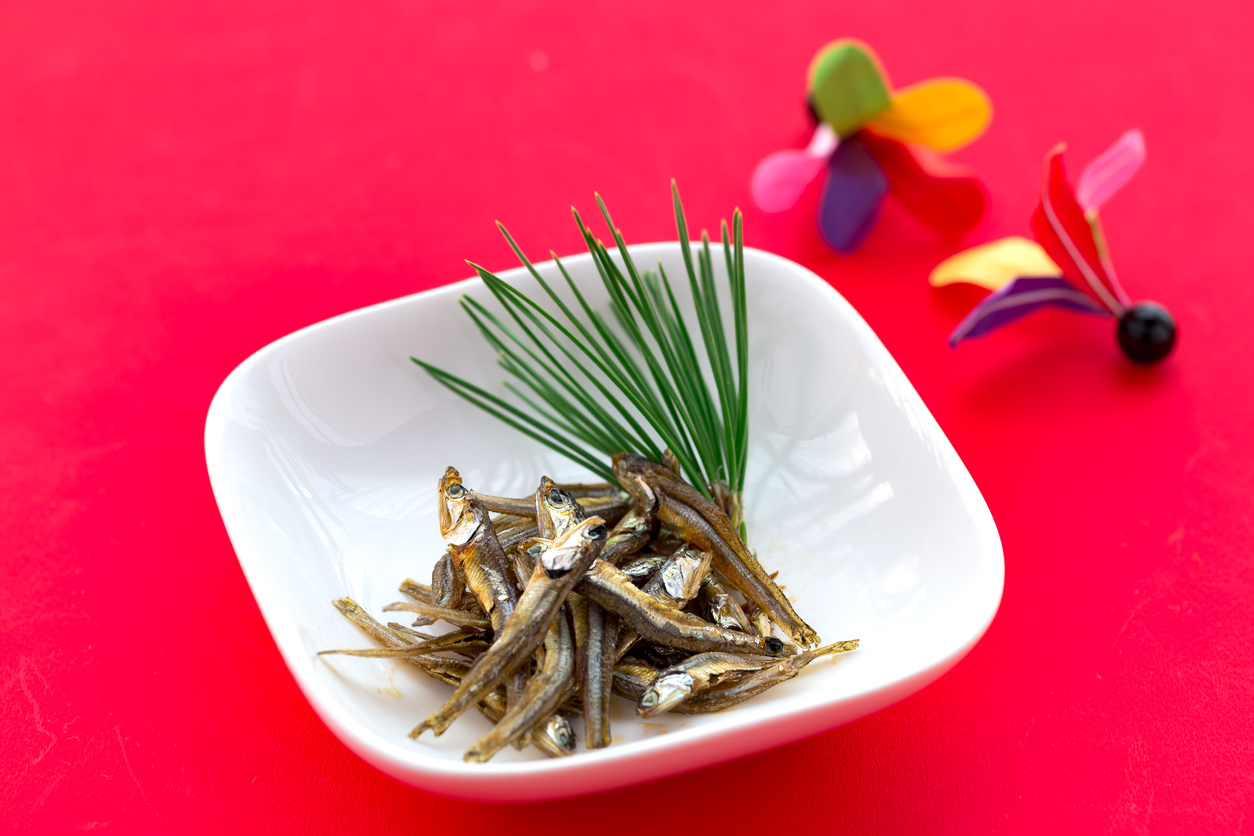
Translated directly into English, tatsukuri (dried, sweetened baby sardines) means rice farming. But what does sardines have to do with grains and agriculture? Well, a long time ago Japanese farmers used dried sardines as a fertilizer for their rice fields. Its other name, gomame, literally means “50,000 grains of rice” and derives from the fact that sardine fertilizer produced a great harvest of rice. Since then, tatsukuri has been considered as a symbol of good harvest for the next year.
Renkon: Foreseeable, good future
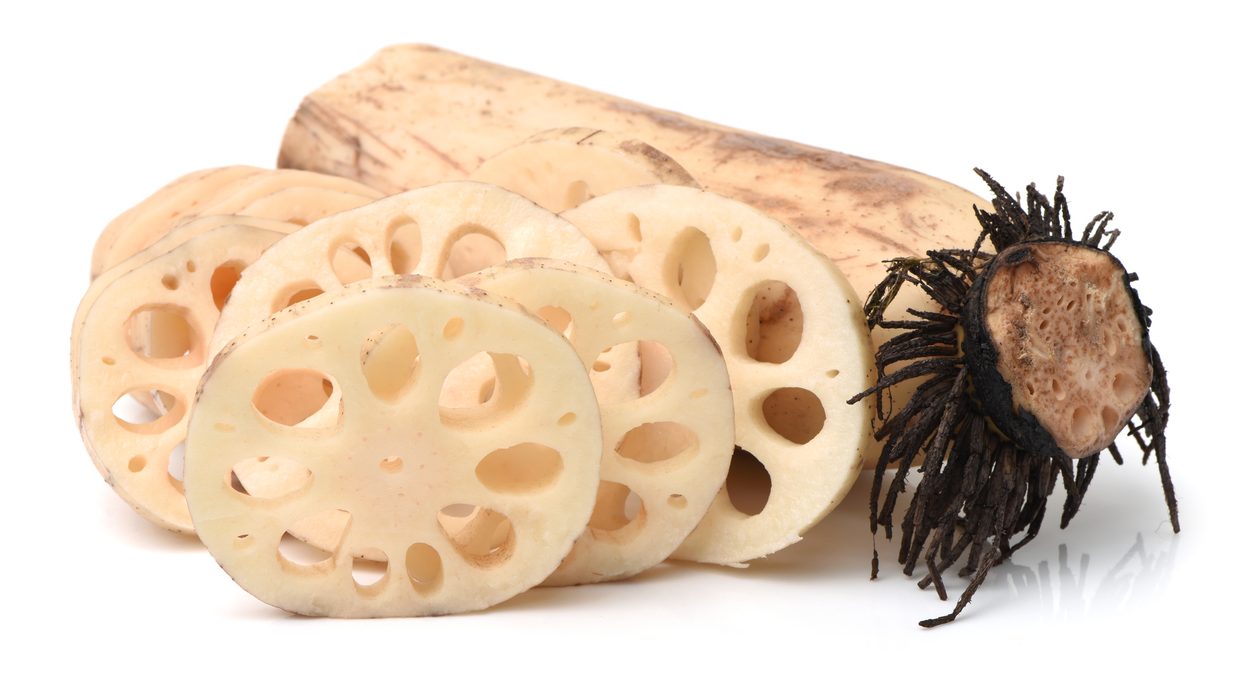
In Buddhism, renkon (lotus root) is considered a plant of purity, as it’s believed to grow in the heavenly pond where the Buddha lived. Lotus root represents a happy future without obstacles. Why? Well, look through the holes in the renkon—you can clearly see the other side without any interference.
Kikuka-kabu: Celebration & Promotion
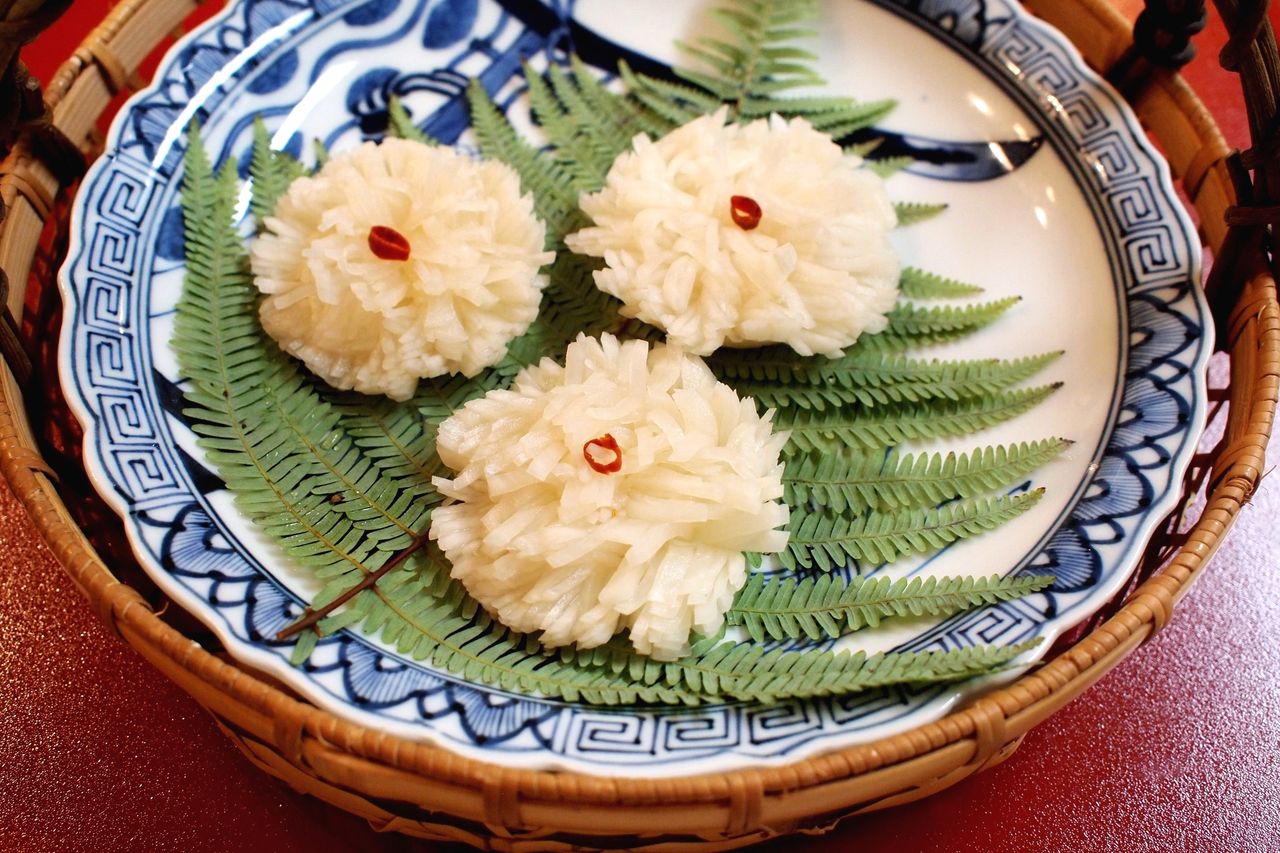
Kabu, or turnip, are served in the shape of kiku (chrysanthemum) in osechi ryori. The chrysanthemum is the Japanese national flower and is often associated with traditional festivities and celebrations (as well as the imperial family). There is also a belief from China that it drives away evil and allows you to live longer.
Gobo: Strength & Stability
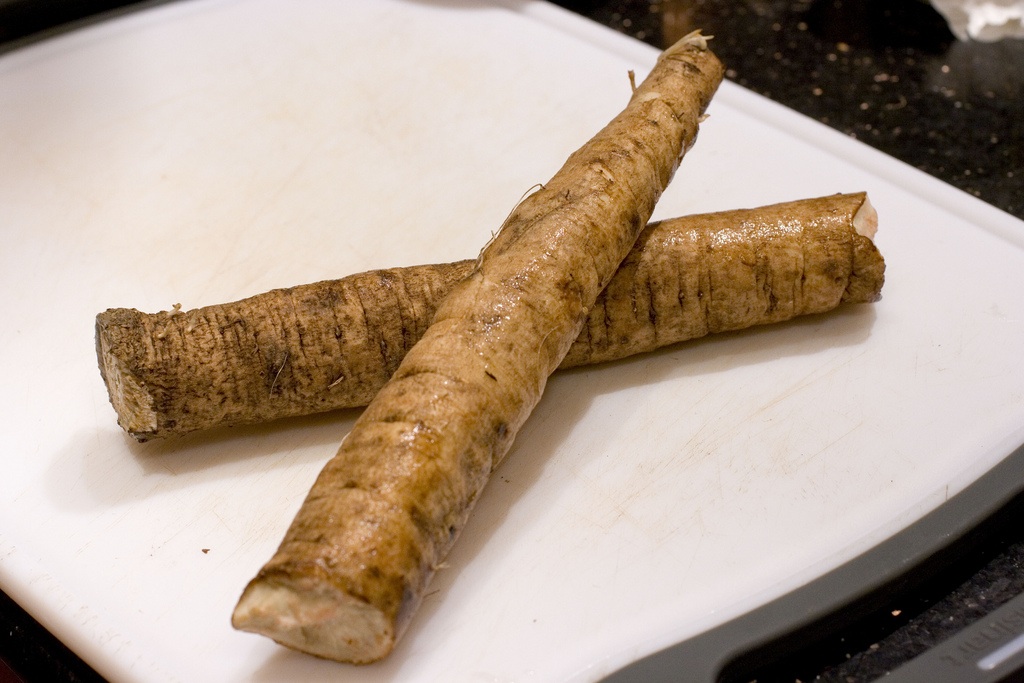
Gobo (burdock root) takes a while to cut down and it’s exactly this characteristic that landed it on the osechi dish. Just like those roots that grow so firmly in the soil, burdock symbolizes hope for a life of strength and stability and a life of physical strength. In other words: eat this at New Year’s and nothing can bring you down.
Tai: Auspiciousness & Celebration
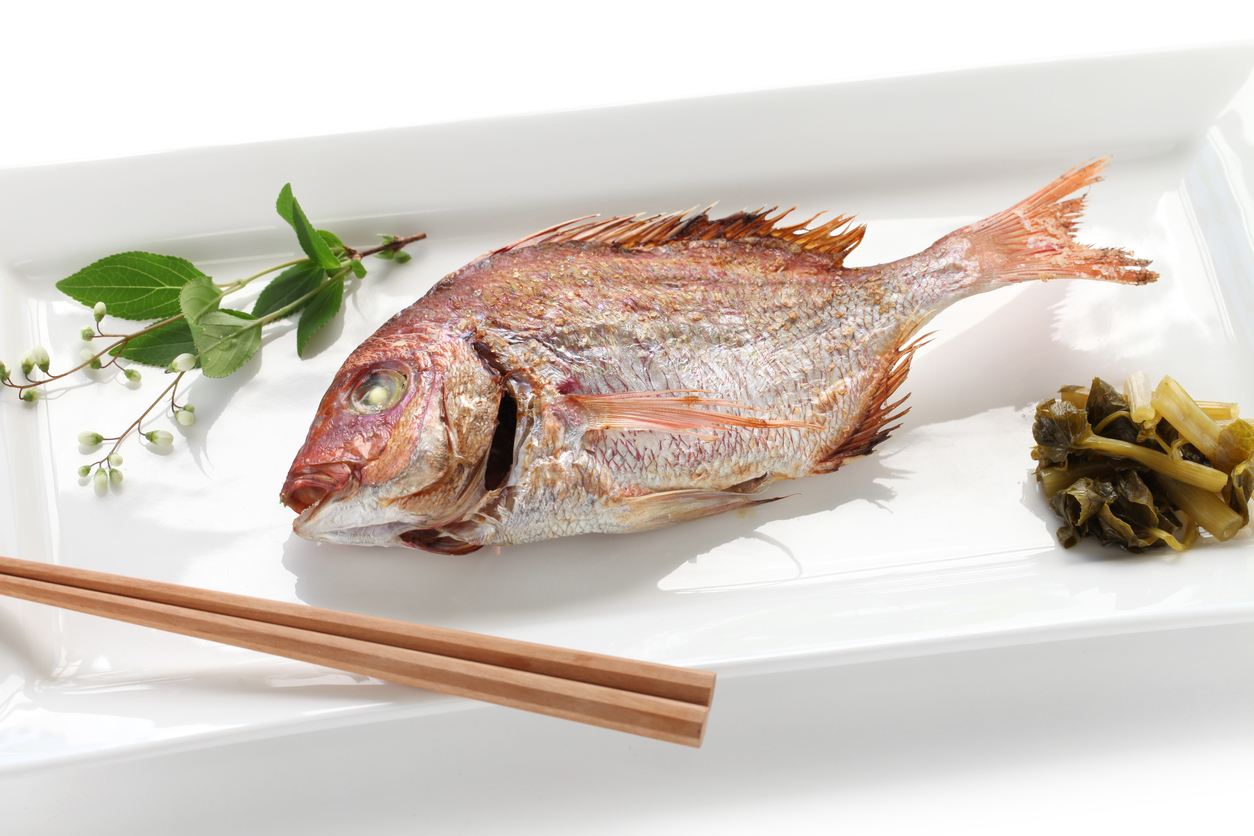
Tai, or sea bream, is a fish for celebration in Japan. A play on words, it derives from medetai, meaning “to celebrate.” The fish is eaten when a child is born or at weddings in the hope of prosperity and happiness. Make a wish as you remove those bones…
For food enthusiasts who wish to cook their own osechi ryori, here is a quick tutorial by Noriko and Yuko at Japanese Cooking 101. Yoi otoshi o (“Have a good year”)!












